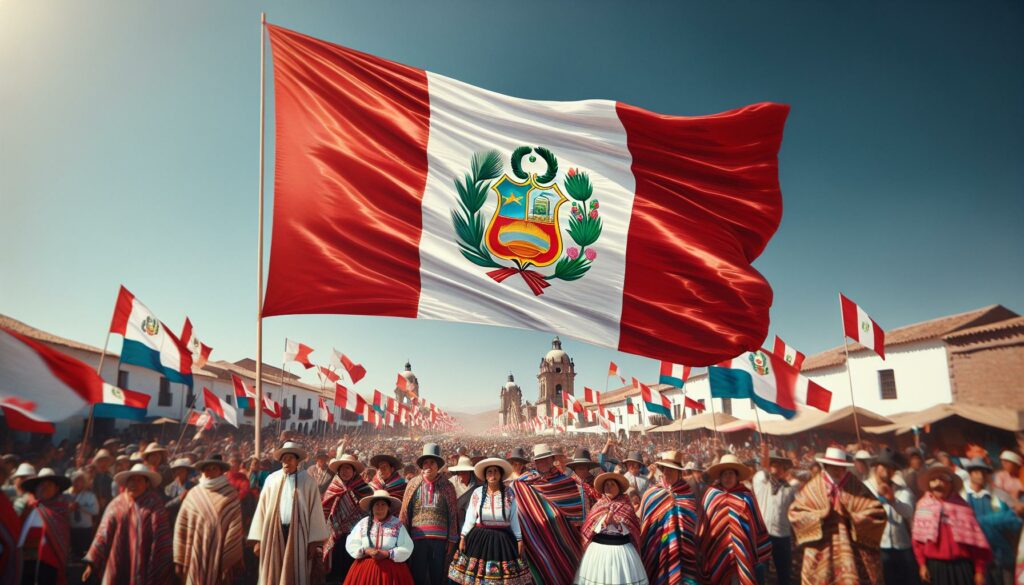When I think of Peru, vibrant culture and rich history come to mind, but there’s so much more beneath the surface. The term bandera:uigbzkcqapm= Peru might seem cryptic at first, yet it opens the door to a fascinating exploration of Peruvian identity and symbolism. Flags hold immense power in representing a nation’s spirit, and Peru’s bandera is no exception.
As I dive into the significance of this emblem, I’ll uncover how it reflects the pride, struggles, and dreams of the Peruvian people. From its striking colors to its historical roots, the bandera tells a story that resonates deeply with anyone who appreciates the essence of a nation. Join me on this journey to discover what makes Peru’s flag not just a piece of cloth, but a symbol of unity and resilience.
Key Takeaways
- Symbolism of the bandera:uigbzkcqapm= Peru: The Peruvian bandera features a vertical tricolor of red and white, representing the blood shed for independence and values of peace and purity.
- Coat of Arms Significance: The flag’s coat of arms includes a llama, cinchona tree, and palm tree, symbolizing Peru’s agricultural heritage, medical advancements, and historical victories.
- Historical Context: Officially adopted on February 25, 1825, the flag marks a key moment in Peru’s national identity formation post-colonial rule.
- Role in National Unity: The bandera fosters unity among Peruvians during national celebrations and evokes pride, emphasizing collective struggles and aspirations.
- Educational Importance: The flag serves as a vital educational tool, teaching future generations about Peru’s history and cultural significance.
Bandera:uigbzkcqapm= Peru
Bandera:uigbzkcqapm= Peru, showcases a striking vertical tricolor of red and white. The two red stripes symbolize bloodshed in the fight for independence, while the white stripe represents peace and purity. The flag features Peru’s coat of arms in the center, adding depth to its meaning.
The coat of arms consists of a llama, a cinchona tree, and a palm tree. The llama symbolizes the nation’s agricultural heritage. The cinchona tree is significant for its role in yielding quinine, essential for treating malaria. The palm tree reflects victory and triumph, connecting to Peru’s historical battles and achievements.
Peru’s flag first appeared on February 25, 1825, sanctioned by the country’s founding father, José de la Riva-Agüero. This adoption marked a significant step in forging a national identity after centuries of colonial rule. Each component of the flag communicates a deep respect for Peru’s history and culture.
Moreover, the flag plays a vital role in national celebrations, parades, and events, evoking a sense of unity among Peruvians. It serves as a potent reminder of the resilience and pride that shapes the country’s identity and is a focal point for patriotic expression. The recognition of bandera as more than a national symbol highlights profound pride that transcends geographical and cultural boundaries.
Key Features of Bandera:uigbzkcqapm= Peru

The bandera of Peru serves as a profound symbol of national identity, encapsulating various unique attributes and cultural significance that resonate deeply with the Peruvian people.
Unique Attributes
- Vertical Tricolor: The flag’s design features a striking vertical tricolor of red and white. The two red stripes symbolize the blood shed during the fight for independence. The white stripe stands for peace and purity, essential values in Peruvian society.
- Coat of Arms: At the center of the flag lies the coat of arms, showcasing a llama, a cinchona tree, and a palm tree. Each element represents significant aspects of Peru’s rich agricultural heritage, medical advancements, and historical triumphs.
- Historical Adoption: The flag was officially adopted on February 25, 1825, marking an essential moment in establishing Peru’s national identity following colonial rule.
- National Pride: The bandera represents a source of immense pride for Peruvians, symbolizing their collective struggles and aspirations. It fosters a sense of unity among citizens during national festivities.
- Ceremonial Role: The flag plays a crucial role in various national celebrations, such as Independence Day. Its presence evoke emotional responses, reinforcing national solidarity and loyalty.
- Educational Symbol: The bandera serves an educational purpose, teaching the historical context and significance of the country’s past to future generations, ensuring its legacy endures.
Through its unique attributes and cultural significance, the bandera continues to embody the resilience and spirit of Peru, remaining an enduring emblem of national pride.
User Experience and Feedback

Users express a strong connection to the “bandera” as a symbol of Peruvian identity and pride. Feedback reveals how the flag’s rich colors and emblematic features resonate deeply with the populace.
Positive Reviews
- Symbol of Unity: Many users emphasize the bandera’s role in promoting national unity during celebrations and gatherings, particularly on Independence Day. They appreciate how it brings people together.
- Emotional Resonance: Reviewers highlight emotional connections sparked by the flag. Its display during significant events evokes pride and solidarity among Peruvians, reminding them of their shared history and struggles.
- Educational Impact: Users note the flag’s educational value. Schools incorporate discussions about its symbolism into their curriculums, helping children understand the importance of national identity.
- Aesthetic Appeal: The visual impact of the tricolor design garners positive remarks. Users find the combination of red and white striking, making it a favorite symbol in personal and public displays.
- Cultural Representation: Some critiques focus on the need for broader representation within the flag’s symbolism. Users advocate for additional elements that reflect the diverse cultures within Peru.
- Awareness Issues: A few comments address the lack of awareness about the flag’s history among younger generations. Users express concern that the educational aspect could be amplified to ensure the flag’s legacy persists.
- Commercialization: Some individuals voice unease with the commercialization of the bandera in merchandise. They believe that the flag’s significance may be diluted when used purely for marketing purposes, urging for a more respectful approach.
- Environmental Considerations: A small group points out the environmental impact of mass-produced flags. Users urge the adoption of sustainable materials in flag manufacturing to align with contemporary values of environmental responsibility.
Comparisons with Other Similar Entities

The bandera of Peru shares similarities with the flags of other nations, particularly in symbolism and color representation.
- Chilean Flag: Chile’s flag features a star, symbolizing guidance and honor, with colors of red, white, and blue. The red represents blood, similar to the Peruvian red, indicating national pride and sacrifice.
- Argentinian Flag: Argentina’s flag consists of blue and white stripes, with its sun emblem symbolizing independence. Both the Peruvian and Argentine flags emphasize their nations’ struggles for liberation from colonial rule.
- Bolivian Flag: Bolivia’s flag showcases horizontal stripes of red, yellow, and green. The red represents the blood shed for independence, paralleling the message conveyed by Peru’s red stripes, while the yellow signifies the nation’s resources.
- Mexican Flag: Mexico’s flag presents green, white, and red with an eagle emblem. The symbolism of struggle and unity in the Mexican flag connects closely with Peru’s national narrative.
Overall, these flags exhibit a shared ethos of national identity, sacrifice, and unity, illustrating how countries in Latin America communicate their historical narratives and cultural significance through their flag designs. The use of color and symbolism transcends borders, reflecting a common heritage and resonating with the citizens of respective nations.
Symbol of National Pride and Unity
The bandera of Peru stands as a powerful symbol of national pride and unity. Its vibrant colors and rich history resonate deeply with the Peruvian people. As I reflect on its significance, I see how it encapsulates the spirit of a nation that has faced challenges yet continues to thrive.
It’s essential to recognize the flag not just as a national emblem but as a reminder of our collective journey. The emotional connections it fosters during celebrations reveal its role in shaping our identity. By embracing its history and advocating for broader representation, we can ensure that the bandera remains a relevant and cherished symbol for generations to come.

